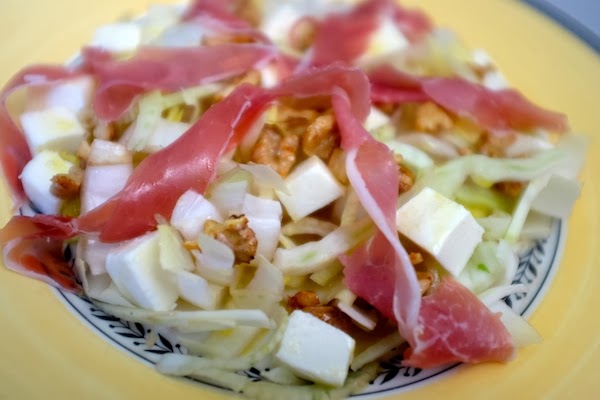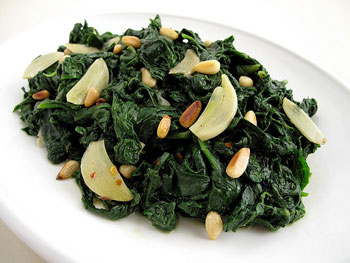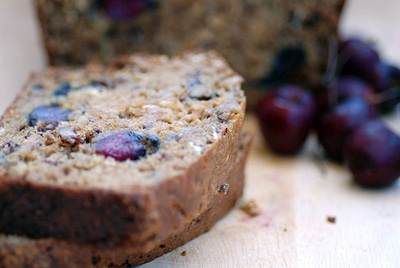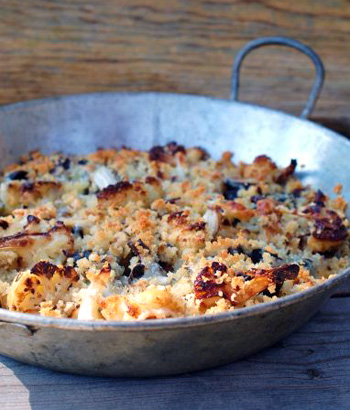
Endive and fennel just seem to have a natural affinity for one another. Both are crisp, but fennel has a chewier texture and a sweetness, while endive is lighter and juicier and has a slightly bitter edge. You could use them to make a simple side salad but this one has lots of goodies to make it a main dish. Use a Champagne vinaigrette or a Dijon mustard vinaigrette to dress it. Or even just lemon juice and extra virgin olive oil.
Winter
Winter
Sautéed Spinach with Garlic
 I would like to say that I loved spinach as a kid, but I mostly detested it along with other vegetables like peas and Brussels sprouts. But now I adore them all. I remember my mom using the Popeye cartoon as an example of why I should eat spinach: so I would grow up big and strong. I'm pretty sure that cartoon was created as propaganda by a team of spinach farmers and mothers. As children, we are all genetically programmed to dislike bitter flavors. That is why kids don't like most vegetables. As we grow into adults our taste buds develop to appreciate and enjoy bitter and even hot and spicy foods.
I would like to say that I loved spinach as a kid, but I mostly detested it along with other vegetables like peas and Brussels sprouts. But now I adore them all. I remember my mom using the Popeye cartoon as an example of why I should eat spinach: so I would grow up big and strong. I'm pretty sure that cartoon was created as propaganda by a team of spinach farmers and mothers. As children, we are all genetically programmed to dislike bitter flavors. That is why kids don't like most vegetables. As we grow into adults our taste buds develop to appreciate and enjoy bitter and even hot and spicy foods.
This simple recipe for spinach is almost too easy for me to include here, but it's my favorite way to enjoy it. It begins with sautéing thinly sliced garlic and a big pinch of red pepper flakes. The spinach is added and cooked until it wilts. For a bit of crunch, I garnish with toasted pine nuts. The flavor of the sautéed spinach is hardly bitter. There really is no excuse to boil or blanch spinach. Doing so just removes all the nutrients and blackens the leaves. Try this side dish with a wonderful dinner and you will see how rewarding it is. I recently paired it with roast beef, mashed potatoes, and Côtes du Rhône wine.
A Mushroom Soup That's Perfect for Chilly Days
 In general, shiitakes come in two forms: the slender stemmed variety and the ones which are fatter, with thicker stems and caps. Mitsuwa and SF Supermarket sell the fatter variety, which have a meater flavor.
In general, shiitakes come in two forms: the slender stemmed variety and the ones which are fatter, with thicker stems and caps. Mitsuwa and SF Supermarket sell the fatter variety, which have a meater flavor.
With so many on hand, they can be used liberally in pastas and soups, grilled, and sautéed with garlic and shallots.
But how to store the ones not eaten those first couple of days?
Everyone knows that mushrooms should only be stored in the refrigerator in paper bags because kept in plastic they quickly go bad. Use a brown paper bag--not a white one, which is coated with wax so the moisture stays inside the bag--in combination with paper towels. The moisture that normally accumulates on the outside of the mushroom is absorbed by the layers of paper.
Kept in the refrigerator another week or two, the brown paper bag-paper towel combination acts as a dehydrator pefectly drying the mushrooms. This technique only works successfully with shiitakes.
If by chance any of the dried shiitakes develop mold, discard and keep the good ones. In my experience, more than 95% will dehydrate without harm.
Cherry, Banana, and Oatmeal Breakfast Bread
 I always crave banana bread -- moist, tender, nut studded slabs with plenty of butter on top. I don't always crave the calories that come with it. That's why I have been experimenting with a creating a healthier, reduced fat banana bread that will keep both tummy and my hips happy. I have succeeded.
I always crave banana bread -- moist, tender, nut studded slabs with plenty of butter on top. I don't always crave the calories that come with it. That's why I have been experimenting with a creating a healthier, reduced fat banana bread that will keep both tummy and my hips happy. I have succeeded.
This banana bread is low in fat and calories yet high in fiber, protein, and heart-healthy omega-3 fatty acids. Instead of fats such as butter or oil, I used healthier egg whites, low-fat buttermilk, non-fat yogurt, and orange juice. Instead of just plain white flour, I used protein and fiber-rich oats and whole wheat flour and omega-3-rich flax seed and walnuts.
The cherries are a seasonal surprise that add sweet juiciness to eat bite. Of course, you could substitute other fresh fruit such as apples or mangoes or dried fruit such as raisins or apricots. Oh, and don't worry. It tastes great.
A Recipe for Roasted Cauliflower—In a Gratin
 The savage weather has reached Biblical proportions. Yes, I am exaggerating, but today it is blowing so hard that I am fully expecting Auntie Em to ride by my window on her bicycle at any time. Frankly, I’d rather look out and see her than some random farm item that was once tethered to the ground.*
The savage weather has reached Biblical proportions. Yes, I am exaggerating, but today it is blowing so hard that I am fully expecting Auntie Em to ride by my window on her bicycle at any time. Frankly, I’d rather look out and see her than some random farm item that was once tethered to the ground.*
Well, there is no antidote to all this other than good warming winter food. (And chocolate—I have my new favorite, a 77% percent cocoa bar from Chocolove, by my side.) In the kitchen today I am making a cauliflower gratin, because I am still having cruciferous cravings. Don’t worry, I am not eating the chocolate and the cauliflower at the same time.
Because of my sweet tooth, I prefer cauliflower roasted, rather than prepared any other way. So today I was thinking about taking the extra step of putting roasted cauliflower into a gratin with Gruyère and rosemary—and then I realized I’d already developed a recipe like this for The Fresh & Green Table.
More Articles ...
Welcome to the new One for the Table ...
Our Home Page will be different each time you arrive.
We're sure you'll find something to pique your interest...


